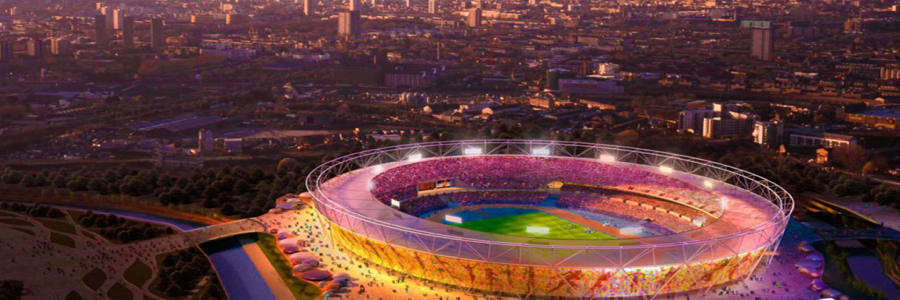Pocket-lint
Everything you need to know
The iPhone 5 has landed. Apple has chucked it all out the window, re-invented the wheel and still come home in time to watch Blue Peter. Or maybe not - it all depends if you are an Apple fan or not.
Either way, there is a new iPhone in town and you want to know about it. Thankfully so do we. So much so in fact that we have nearly worn out our keyboards bashing out this in-depth round up of iPhone 5 goodness. Read on to discover everything you need to know about the new iPhone 5 and crucially, the iPhone 5 release date.
Size: 7.6mm thin
Apple has changed things up with the new iPhone 5. Working in pairs, the iPhone 4 was a big departure from the 3GS, the 4S a spec update and the 5, another big change from the 4. Apple has recognised the need to offer a bigger screen with the new iPhone, but hasn’t sacrificed much in terms of weight or design. The iPhone 5 measures just 7.6mm thin.
Constructed from glass and aluminium, the iPhone 5 is put together with Apple’s usual top-quality materials and built like one single, seamless object. This means no removable battery.
Weight: 112 grams
Things have somehow become bigger but even lighter, with the iPhone 5 weighing 112 grams, 20 per cent less than the iPhone 4S.
Display size: 4-inch
As we've already noted, Apple has gone bigger in the screen size, as well as changing the display format. Things are now 16:9 and apps play out on a larger 4-inch screen. This should put to rest any reservations potential iPhone purchasers had about Apple’s lack of screen compared to competitors.
The 16:9 screen means some apps can run in widescreen but with a set of black borders on either side. Once developers update them, the apps will naturally lose the borders. Expect this to happen just as quickly as Retina display apps arrived for the new iPad.
Display resolution: 1136 x 640, 326 ppi
Apple has punched the screen res even higher for the iPhone 5. In order to retain those Retina display credentials, the larger screen offers a 1136 x 640 display resolution with the new iPhone 5. The result: likely one of the sharpest screens currently available on a smartphone.
This bigger screen has been optimised to show more. Apple now has a fifth column of apps and four icons at the bottom, as well as larger and wider apps themselves.
Display quality: IPS, 44 per cent more colour saturation.
Apple loves IPS and so do we. Everything from the new iPad to the Retina MacBook Pro has an industry leading display. IPS has been working wonders for the likes of Asus and Amazon with its Kindle Fire HD, and there are no exceptions here.
Apple has also further improved colour saturation with the iPhone 5. Now you get 44 per cent brighter colours from the screen, bringing the display in line with that of the new iPad. There's also reduced glare in direct sunlight.
Network connectivity: LTE
Wait, what’s this? 4G I hear you say. Yup that’s right, Apple has entered into the 4G mobile game with the new iPhone 5. Network selection will vary by country, but it looks like those who want it will finally have access to high-speed mobile internet on an Apple phone. Apple has included a LTE to bring just about every possible form of 4G to the iPhone 5. In the UK, you'll be able to get 4G LTE on the iPhone 5 with EE.
Processor: A6 chip, 2X faster than iPhone 4S
Not content with the already potent powerhouse in the new iPad, Apple has planted a new A6 chip into the iPhone 5. This should bring yet more impressive apps as well as an even more responsive iOS. Expect this to make the new iPhone the fastest handset Apple has yet produced.
So fast in fact that Apple is touting a 2X speed increase over the iPhone 4S with graphics also being twice as quick. Pages, for example, opens 2.1 time times faster than on the previous iPhone. Games such as Real Racing have proper reflections and real time mirrors.
The processor is also 22 per cent more efficient, meaning it shouldn't have any major impact on the battery life of the new iPhone 5.
iOS 6
We already know quite a bit about iOS 6 but we are yet to get our hands-on to play with it. That's about to change, as the new iPhone 5 is announced. Shipping with iOS 6 brings with it a tonne of new iPhone features. Take a look at the lot of them here.
Rear camera: iSight, 8 megapixel
The iPhone 4S made quite a storm with its camera at launch. Apple wasn’t about to let this change with the new iPhone 5. Slapped on the back is an 8-megapixel sensor loaded with iSight tech.
The result is the best shooting experience yet on an Apple device and one which should be able to compete with the likes of the Nokia Lumia 920. Just see what happened when we pitched the iPhone 4S against the Nokia Lumia 920.
Boasting a 3264 x 2448 resolution, f/2.4 lens with hybrid IR filter, dynamic low light and sapphire crystal cover, this is the best camera Apple has put together by far. iOS 6 also brings new image processing tech that should improve the ability of the iPhone 5 to process shots in low light.
On top of that there are things such as a new Panorama mode capable of a 28 megapixel image and shared Photo Streams in iOS 6: Apple really has packed the new iPhone full of camera tech.
Front camera: 720p capable
iOS 6 adds the ability to make FaceTime calls over 3G. As such Apple has pumped up the front-facing camera resolution on the iPhone 5, with hopes that more people will start using the video calling service. Let's hope all the resolution makes things look just that little bit better.
A BSI sensor with face detection like that on the rear-mounted camera puts the front-facer not that far off the rear. There is also improved video stabilisation, making those all-important high-res video calls over 4G just that little bit sweeter.
Video capture: 1080p/30fps
It wouldn’t be right if the new iPhone didn’t feature at least some sort of 1080p video capability. No surprises then that you get that same HD resolution recording as found in the iPhone 4S.
Connectivity: LTE, Ultrafast Wi-Fi, 802.11a/b/g/n Wi-Fi, dual channel up to 150Mbps
Yup that's right, the new iPhone is LTE capable. This means ultra-fast mobile broadband and access in all likelihood, to EE's 4G network.
A clever dynamic antenna for auto switching connections should help save on power. Wi-Fi also takes a speed jump, running all the way up to 150Mbps should you have a connection that fast.
Storage: Up to 64GB
Apple’s usual trio of storage options is on offer here, with a gradually increasing price scale to match. No microSD though, but then are you really surprised?
Battery: Beats the iPhone 4S
LTE and that more powerful processor demands a bigger battery. Apple has kept quiet on the actual size of the unit, but has given some time estimates to the battery. Eight hours on 3G and 225 hours of standby put the iPhone 5 ahead of the 4S, despite the LTE and extra processor power.
Three microphones, Wideband Audio
Apple has included a trio of microphones on the iPhone 5, as well as a clever noise-cancelling ear piece with wide band audio. The result should be the best-sounding calls yet on your iPhone. This does require carrier support however and only 20 so far are involved. EE is one of them.
Lightning: 8 signal dock connector
Apple has redesigned its dock connector for the iPhone 5 to bring it up to date with the rest of the phone's technology. Called Lightning, to go along with Thunderbolt, it is 80 per cent smaller, more durable and has a reversible connection.
Apple has naturally announced an adapter for the 30-pin connector to use it with the 8 pin, so accessories shouldn't be defunct.
iPhone 5 release date: 14 September pre-order, 21 September shipping
Rumours were true then. The phone is going up for pre-order in both slate and white on 14 September and should turn up at houses on the 21. Expect things to sell out quick. Very quick.
iPhone 5 price: from £529
Go to original article













































